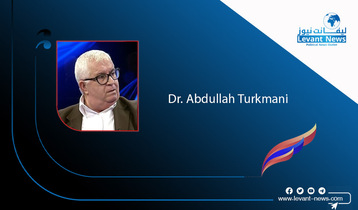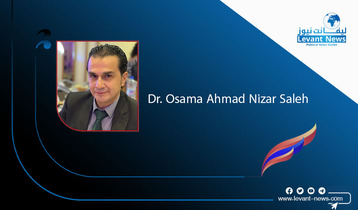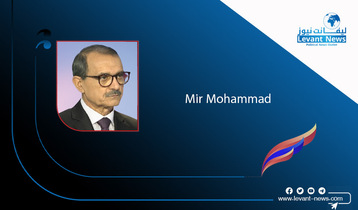-
Afghanistan’s Year Zero

Whilst it was often said in the last few months that Washington was keen to avoid a ‘helicopters from Saigon’ moment, something remarkably similar has taken place with a series of iconic events following each other in quick succession.
In July President Biden explained that “the Taliban is not the … North Vietnamese army. They’re not — they’re not remotely comparable in terms of capability. There’s going to be no circumstance where you see people being lifted off the roof of
Around the world and at the UN Security Council, the majority of political leaders have appeared stunned. Whilst the Russians and the Chinese celebrated the largely peaceful final transfer of power, the Americans and their allies scrambled to agree a unified position. Meanwhile planned efforts to evacuate translators or allied Afghans have been rapidly overtaken by events and the wider picture for refugees is made all the more bleak by the closure of borders and safe routes as well as all of the Covid restrictions.
An almost twenty year effort, a cost estimated to be between $1-2 trillion dollars and tens of thousands killed and maimed have seen the Taliban return to power and a sense that the country’s politics and near history has come full circle. When the Khmer Rouge marched into Phnom Penh in Cambodia in 1975 it was proclaimed a ‘Year Zero’ and a reset of the country’s history that would result in a radical purging of the population and exodus from cities eventually resulting in the ‘Killing Fields’ and the deaths of up to 2.5 million people.
This time there is a strange familiarity of course to the Taliban being in control in Kabul following the exit of a superpower from the country that is famously the ‘graveyard of empires’. When they first rose to prominence and power in the mid-1990s before the mass public had ever heard of al-Qaeda the group was seen a radical irrelevance in a country that had become strategically insignificant in the post-Cold War era.
Banning music and television, and enforcing strict and narrow roles on what women could do and wear were seen as bizarre and eccentric but any threat appeared confined to Afghanistan’s own borders before the events of 9/11 and its aftermath. So what will happen this time? Saudi Arabia on Monday urged Taliban insurgents who seized Afghanistan's capital Kabul, completing a sweep across the country, to preserve lives, property and security as stipulated by "Islamic principles".
Whilst the immediate focus is of course on how the new rulers of Afghanistan will act, particularly towards those affiliated with the previous Government, women and minorities, the ripples of what has happened will reverberate across the region and globally. Indeed the potential for destabilizing effects for Central Asia, South Asia, and the MENA is very real but by no means guaranteed.
In the global sphere Britain’s Prime Minister Boris Johnson is pushing for a unified position towards recognition and engagement with the Taliban government with a focus on the condition around the group not harbouring terrorist groups. Meanwhile the Taliban themselves have pushed questions around their governance structure down the road to when ‘all foreigners have left the country’, to presumably give themselves some breathing space after the hyperventilation of the events of the past ten days.
Reporters in Kabul said that it was anyone’s guess what will happen in two hours let alone beyond that. Yet there are historical trends that we can look to for potential next steps. The need to consolidate the newly won authority is an obvious next step as the group moves from fighting to the harder task of governance. Running basic services in the 7th poorest country in the world will be a challenge and reports out of the earlier captured Kunduz suggest the Taliban are already struggling at it.
Managing the impact of any further exodus from the country is another immediate challenge. Let us not forget that this year 400,000 Afghans have already been forced from their homes. There are almost 2.5 million registered refugees from Afghanistan. They comprise the largest protracted refugee population in Asia, and the second largest refugee population in the world. The scenes from Kabul airport only hint at the larger numbers of Afghans who could now want to leave the country.
Controlling this exodus may ironically prove a facet in the group’s search for international legitimacy. The fear Western states have of uncontrolled flows of people across their seas and borders may give the Taliban leverage on their search for recognition beyond their borders, arguably the one trump card the international community has left. This may place Afghans in a double bind suffering directly under the Taliban and more nefariously through the restrictions of those who’d be happy for them to prevent them leaving the country as this new phase of its history begins.
by: James Denselow

You May Also Like
Popular Posts
Caricature
BENEFIT Sponsors BuildHer...
- April 23, 2025
BENEFIT, the Kingdom’s innovator and leading company in Fintech and electronic financial transactions service, has sponsored the BuildHer CityHack 2025 Hackathon, a two-day event spearheaded by the College of Engineering and Technology at the Royal University for Women (RUW).
Aimed at secondary school students, the event brought together a distinguished group of academic professionals and technology experts to mentor and inspire young participants.
More than 100 high school students from across the Kingdom of Bahrain took part in the hackathon, which featured an intensive programme of training workshops and hands-on sessions. These activities were tailored to enhance participants’ critical thinking, collaborative problem-solving, and team-building capabilities, while also encouraging the development of practical and sustainable solutions to contemporary challenges using modern technological tools.
BENEFIT’s Chief Executive Mr. Abdulwahed AlJanahi, commented: “Our support for this educational hackathon reflects our long-term strategic vision to nurture the talents of emerging national youth and empower the next generation of accomplished female leaders in technology. By fostering creativity and innovation, we aim to contribute meaningfully to Bahrain’s comprehensive development goals and align with the aspirations outlined in the Kingdom’s Vision 2030—an ambition in which BENEFIT plays a central role.”
Professor Riyadh Yousif Hamzah, President of the Royal University for Women, commented: “This initiative reflects our commitment to advancing women in STEM fields. We're cultivating a generation of creative, solution-driven female leaders who will drive national development. Our partnership with BENEFIT exemplifies the powerful synergy between academia and private sector in supporting educational innovation.”
Hanan Abdulla Hasan, Senior Manager, PR & Communication at BENEFIT, said: “We are honoured to collaborate with RUW in supporting this remarkable technology-focused event. It highlights our commitment to social responsibility, and our ongoing efforts to enhance the digital and innovation capabilities of young Bahraini women and foster their ability to harness technological tools in the service of a smarter, more sustainable future.”
For his part, Dr. Humam ElAgha, Acting Dean of the College of Engineering and Technology at the University, said: “BuildHer CityHack 2025 embodies our hands-on approach to education. By tackling real-world problems through creative thinking and sustainable solutions, we're preparing women to thrive in the knowledge economy – a cornerstone of the University's vision.”
opinion
Report
ads
Newsletter
Subscribe to our mailing list to get the new updates!






















